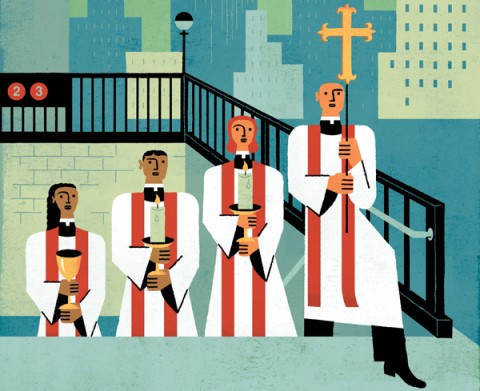Worship without walls
Public ritual might be construed as a benign relic, as imperialism, or as marketing. Or it might be seen as a form of pilgrimage.

Many of us experience a special energy in worship when routine liturgical acts take place outside the church walls: processing around the block on Palm Sunday, offering ashes to strangers at a subway station on Ash Wednesday, attending a baptism at a public beach, or even simply gathering for or being sent from worship in a busy public place. The familiar becomes at least partly strange—perhaps uncomfortably so.
What contributes to this sudden strangeness? Can these acts teach us anything about Christian worship in general and its engagement with the wider world? Why worship out in public anyway?
It is increasingly unusual to attend worship in North America, and therefore to do so publicly is uncomfortable for some people. But all religious ritual is in a sense strange, and this strangeness is part of what generates ritual’s theological power. Imagine discovering someone intently tracing a large letter T in the air before a group of people; or someone repeatedly plunging another person under water without any apparent intention related to hygiene, play or malice; or people intently focused on taking one sip from a single, shared metal cup. These acts are curious because they appear intentional but do not have an immediately obvious purpose. Encountering them activates an imaginative search to solve the puzzle of what is happening in these acts.




